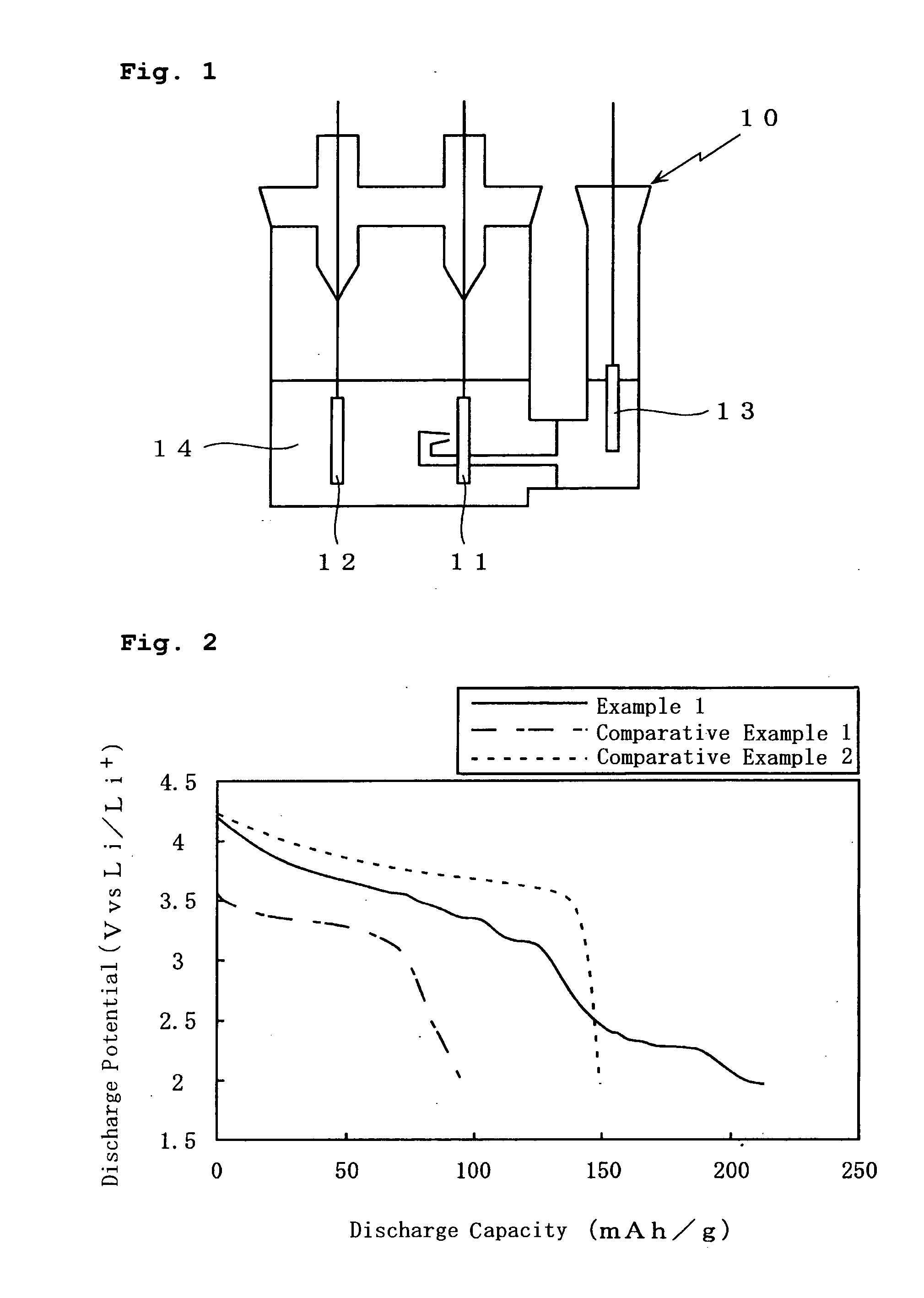Non-aqueous electrolyte secondary battery
- Summary
- Abstract
- Description
- Claims
- Application Information
AI Technical Summary
Benefits of technology
Problems solved by technology
Method used
Image
Examples
example 1
[0027] In Example 1, a positive electrode was prepared in the following manner. LiV2O5 having a BET specific surface area of 1 m2 / g and a volume average particle size D50 of 10 μm was used as a lithium-containing vanadium oxide, serving as a first positive electrode active material. Li1.15Ni0.4Co0.3Mn0.3O2 having a BET specific surface area of 0.5 m2 / g an a volume average particle size D50 of 10 μm was used as a second positive electrode active material. The first positive electrode active material and the second positive electrode active material were mixed together at a weight ratio of 5:5. The resultant mixture was used as a positive electrode active material.
[0028] The positive electrode active material thus prepared was kneaded with a solution in which particulate carbon made of acetylene black, serving as a conductive agent, and polyvinylidene fluoride, serving as a binder agent, were dissolved in N-methyl-2-pyrrolidone so that the weight ratio of the positive electrode activ...
example 2
[0029] In Example 2, a positive electrode was prepared in the same manner as in Example 1 above, except that LiFePO4 having a BET specific surface area of 10 m2 / g and a volume average particle size D50 of 2 μm was used as the second positive electrode active material in the positive electrode.
PUM
 Login to View More
Login to View More Abstract
Description
Claims
Application Information
 Login to View More
Login to View More - R&D
- Intellectual Property
- Life Sciences
- Materials
- Tech Scout
- Unparalleled Data Quality
- Higher Quality Content
- 60% Fewer Hallucinations
Browse by: Latest US Patents, China's latest patents, Technical Efficacy Thesaurus, Application Domain, Technology Topic, Popular Technical Reports.
© 2025 PatSnap. All rights reserved.Legal|Privacy policy|Modern Slavery Act Transparency Statement|Sitemap|About US| Contact US: help@patsnap.com


